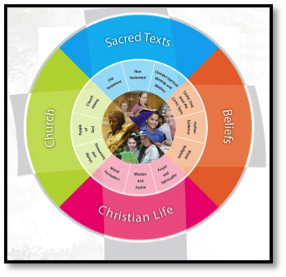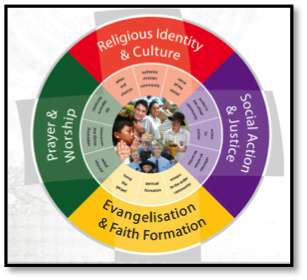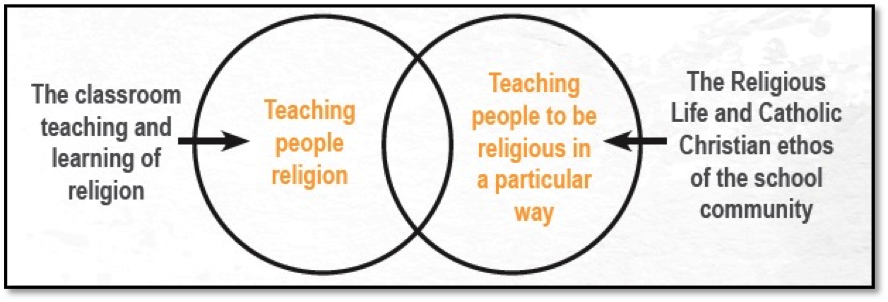Christ is the foundation of the whole educational enterprise in a Catholic school. The fact that in their own individual ways all members of the school community share this Christian vision, makes the school “Catholic"; principles of the Gospel in this manner become the educational norms since the school then has them as its internal motivation and final goal. (The Catholic School, 34).
The shape of Religious Education within Brisbane Catholic Education has two dimensions, the classroom learning and teaching of religion and the religious life of the school. These are two distinct but complementary dimensions described as ‘teaching people religion and teaching people to be religious, in a particular way’ (Moran, 1991).


Teaching people religion is an educational activity focused on the classroom religion program. It utilises a range of learning and teaching processes, pedagogies and resources. The classroom religion program needs to have all the rigour and richness of other learning areas. The core content taught to students is organised into four interrelated strands: Sacred Texts,Beliefs, Church and Christian Life.
Teaching people to be religious, in a particular way is most commonly referred to as the Religious Life of the School and is focused on the spiritual formation of students and their faith development. It is comprised of four interrelated components:

Religious Identity and Culture, Evangelisation and Faith Formation, Prayer and Worship and Social Action and Justice.
 St Mary MacKillop Catholic School communicates its identity and charism by:
St Mary MacKillop Catholic School communicates its identity and charism by:- Celebrating the school story each year through direct teaching.
- Learning about our House Patrons.
- Religious iconography throughout the school. For example: Statue of St Mary Mackillop, School Values 'Barn', Peace Garden for meditative prayer, 'Nature Walk' with references to St Mary Mackillop's Life, feast day group constructed artwork based on the H.U.G.E values.
- Office foyer displays based upon the Church Liturgical Year.
- Communicating significant events and learning in the school newsletters.
- Integration of the Archdiocesan Vision and values into school's mission, vision and school story.
- Public celebrations and recognition to the commitment of role holders within the school (Blessing of Staff 20/30 years, World Teachers Day, Blessing of Support Staff).
- Using student and staff skills in the arts (artwork used in presentations/liturgies).
- Welcoming and encouraging parent and community participation through Mass, liturgies, open afternoons, secular events.
- Engaging students in prayerful use of spaces and the environment within the school (Church, Southern Cross Centre, Peace Garden).
- Exploring God's presence through art and media (Stations of the Cross through the arts, sharing of students religious art).
- Enhancing prayer through the introduction of more contemporary music, new resources in celebrations, liturgies (student choir, multimedia presentations).
© Brisbane Catholic Education, (2020)